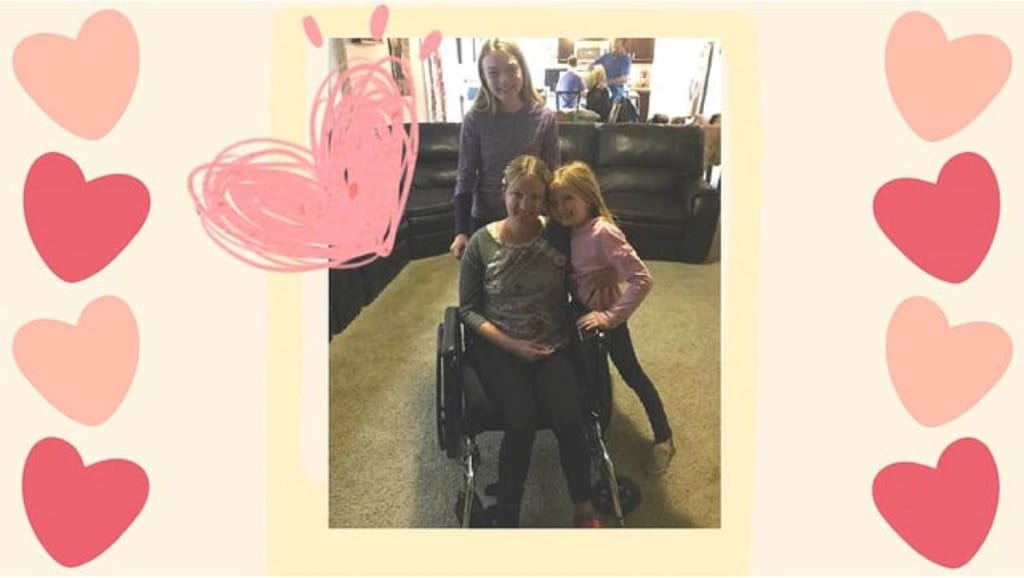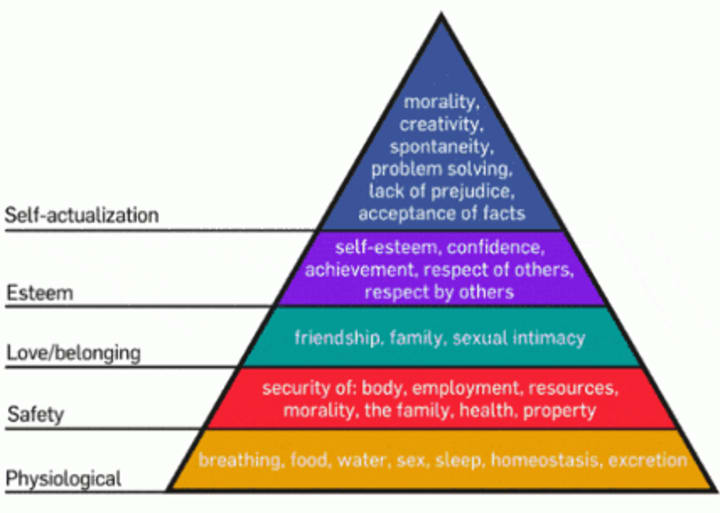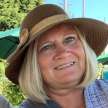The Healing Power of Love
How I overcame a feeling of helplessness

Growing up, I believed Mom could heal everything with love, a positive attitude, and a kiss. When Grandpa died, she taught me if he lived in my heart, nobody could steal my memories. After painful breakups, Mom shared personal stories of heartbreak and how they prepared her for meeting my father. When I failed a test, her wisdom taught me that failure builds strength. She soothed my bruises, cleaned scrapes with spit and tissue, and wiped tears away with a kiss.
If you believe mothers are superhuman, then it will be easy to understand why I felt like a failure the day Kari had a stroke; I, her mother, couldn’t make everything better. Looking at my daughter in the ICU, unable to sit up, move her arms, or talk, left me searching for a way to support her. Subconsciously, experiences from life and education reminded me of how to be human. I couldn’t heal Kari, but I could love her.
Reviewing the science
Abraham Maslow formulated a theory that humans require their most basic needs to be fulfilled before they feel safe, grow, and mature. His ideas are presented in a pyramid with the most basic needs at the bottom. As the tiers move towards the top, the needs become increasingly complex and internalized.

When looking at the faces of the children in my classroom, I peered at them through Maslow’s lens. My experiences with them reinforced the fact that learning cannot be optimized if the student is hungry, tired, or lacking any physiological needs. With that knowledge, my first goal as I sat beside Kari’s bed, became to create an environment that promoted learning and safety.
Looking at my daughter, wrapped in a rough cotton, generic hospital blanket, nourished through IV, surrounded by family, I knew her most basic needs were met. However, I understood there was more I could do to increase her mental stability.
Distraught, knowing her medical condition rested in the hands of the staff, I needed to do something, so I created a vision of an environment to promote healing. Then slowly, one rung at a time, I escorted her through each of Maslow’s levels toward healing.
Tier 1: Physiological
Food and water
Armed with a Styrofoam cup of ice chips, I spooned tiny pieces into Kari’s mouth and dispensed small drops of water. Her eyes reflected appreciation. The nurses provided lemon cotton swaps to clean her mouth and brush her lips. Then, lip balm provided relief.
Restful slumber
Sleep came and went, but comfort seemed out of reach until we learned how to efficiently position her body. Dan, her husband, brought her favorite ultra-soft, plush blanket from home. Once positioned and cocooned, we added an oversized body pillow in a silk case that absorbed her. With comfort came relaxed slumber.
Tier 2: Safety
We progressed to the second level of Maslow’s pyramid by examining ways to provide Kari security. Following the doctor’s orders, we lived in the shadows with the curtains closed and spoke in whispers. With strength, Kari wanted answers and our whispers were an irritant because she interpreted the silent conversations as information we hoped to hide. She believed we held secrets that threatened her safety, so our voice tones returned to normal.
Employment of purpose
Before long, I noticed the hospital staff was asking me questions, which removed Kari from the decision-making process and eliminated her ability to control her destiny. Once we started to direct questions to her, she became an active participant in her recovery.
At first, she responded with simple gestures or eye movements, but over time gained strength and confidence. Once we acknowledged Kari’s need for inclusion, she became an actress in her own story.
Resources
The sterile silence lacked stimulation, so I started reading aloud. Aware the context of the words carried little meaning, simple texts were chosen to establish communication and trigger the neurons in the brain. The introduction of music, one of her passions, seemed to relieve physical tension. The voices of Garth and Randy Travis bookended with Green Day and Third Eye Blind resonating in the background offered comforts from home.
I specifically remember the night Jodi, Kari’s daughter, reminded us that her mom slept with a fan app that dispersed white noise during the night. It provided comfort, and Jodi’s inspiration proved valuable as it blocked out the nighttime interruptions in the hall.
Property
The hospital room looked like… well . . . a hospital room. If it was to become Kari’s healing home, personal touches were necessary.
We strung colorful yarn above her bed and fastened pictures of family and friends who smiled down at her day and night. On the shelves sat framed pictures, a softball signed by all the players of Jodi’s softball team, crystals with healing powers, and gifts from friends.
A bulletin board held twenty-three get-well cards from Kari’s kindergarten students and colored pictures from her daughters. Assembled items bathed her senses and allowed memories to drift in and out as her brain remained fuzzy due to trauma.
Tier 3: Love
Family and friends
After the stroke, Kari accomplished little by herself. Tasks once thought daily routines required effort. We filled the toothbrush with paste, wiped sleep from her eyes, brushed her hair and held the spoon that provided nourishment. We never said Kari can’t do something and instead, “Not yet.” As quickly as possible, she took back each responsibility.
When her niece ran into the room and yelled, “Kiki,” a warm embrace raised the temperature in the room. When Kari and her sister, Kat, cleared the room and ate dinner together, laughter overflowed to the hallway. And all the sadness disappeared when Jodi or Eliza climbed onto the bed with their mom to cuddle.
Tier 4: Esteem
When Kari went home, she gained self-confidence and grew more self-reliant. In her natural environment, she filled the role of Mom for her daughters. With each passing week, her accomplishments pushed her to attempt more. She went from barely getting around with a walker to walking around the block with a cane to walking slowly without any equipment.
Whenever Kari tried something new, we waited and encouraged her progress. Sometimes success was limited but as each attempt showed progress, her dedication to the achievement of her goals grew stronger. Her positive self-esteem allowed her to challenge herself and her successes increased her abilities.
Tier 5: Self-Actualization
Humans were never intended to live life permanently self-actualized. We may be happy with life, but we are not happy all the time. Life is like riding the waves of the ocean. There are highs and lows. Often Kari felt like she was in over her head, but she dog-paddled to keep her head above water.
Her experience provides an example to every patient that healing is possible and to every caregiver that support is invaluable.
The first time I stood beside Kari’s bed in the hospital, emotions flooded rational thoughts. I had failed as a mother. However, when I found ways to support her, I also helped myself deal with my pain. When she opened her eyes, unable to talk, I knew it would be a long, difficult journey but never anticipated her strength and determination.
About the Creator
Brenda Mahler
Travel
Writing Lessons
Memoirs
Poetry
Books AVAILABLE ON AMAZON.
* Lockers Speak: Voices from America's Youth
* Understanding the Power Not Yet shares Kari’s story following a stroke at 33.
* Live a Satisfying Life By Doing it Doggy Style explains how humans can life to the fullest.
Enjoyed the story? Support the Creator.
Subscribe for free to receive all their stories in your feed. You could also pledge your support or give them a one-off tip, letting them know you appreciate their work.






Comments (1)
Very good